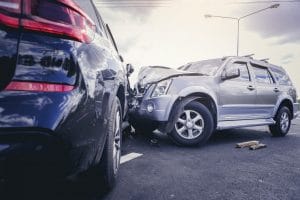Why Manufacturers Should Be Held Liable for Failing to Install Crash-Avoidance Technology
 Technology can save lives. In the third decade of the 21st century, there’s no excuse for cars failing to have top-of-the line crash avoidance technology. While we’re far from having cars that drive themselves, software and hardware do help cars stay away from other cars and pedestrians. The latest technology should warn the driver when a car is too close to another car. If a crash is clearly going to occur without computer action, cars should be capable and ready to steer a vehicle out of trouble or brake to avoid a crash.
Technology can save lives. In the third decade of the 21st century, there’s no excuse for cars failing to have top-of-the line crash avoidance technology. While we’re far from having cars that drive themselves, software and hardware do help cars stay away from other cars and pedestrians. The latest technology should warn the driver when a car is too close to another car. If a crash is clearly going to occur without computer action, cars should be capable and ready to steer a vehicle out of trouble or brake to avoid a crash.
What is crash-avoidance technology?
Much of the technology used to help cars avoid crashes uses sensors, lasers, cameras, and radar (short-range and long-range). This technology monitors vehicles, pedestrians, bicycle riders, traffic signs, and other objects on a continuous basis. Generally, the driver receives subtle warnings such as a sound, a flashing signal, a pull on the seatbelt, or a steering wheel vibration. If the driver fails to respond, then more advanced technology intervenes to brake or control the car. Often, there is a fine balance between driver input and vehicle input.
According to the Consumer Reports article, a chief researcher for IIHS said, “Even in the cases where these systems failed to prevent a crash, if there’s automatic braking going on, or if the driver does brake in response to a warning, that crash is going to be less severe than it would have been otherwise.”
How is crash-avoidance technology evaluated?
Drivers, owners, and the public should know that as crash avoidance systems are being installed, agencies such as the National Highway Traffic Safety Administration (NHTSA) and the Insurance Institute for Highway Safety (IIHS) are continually testing these systems for safety issues. In addition, lawyers are filing product liability and negligence claims when the technology is defective, and the defects cause death or injuries. Lawyers are also pursuing claims when cars fail to have standard crash-avoidance technology.
The IIHS, for example, now evaluates vehicles to determine if they have systems such as forward-collision warning systems and automatic braking. Cars and other vehicles with these systems will gain higher evaluation scores.
A few of the current crash-avoidance technologies
In an extended report, Consumer Reports summarized some of the new crash avoidance technology. Some of the crash-avoidance and car safety systems car, SUV, and truck manufacturers are installing include the following systems:
- Rear cross-traffic alert. This technology is used to warn drivers “of traffic approaching from the sides as [the driver] reverses.” Warnings include chirps and visual clues in the outside mirror or the “rear camera’s dash display.” Consumer Reports says this technology is valuable when you back into traffic when nearby cars obstruct your view.
- Forward-collision warning (FCW) and autobrake. This technology warns the driver that they’re about to hit a car in front of the driver. There are different types of warning systems. If the driver fails to respond, the FCW system brakes automatically by applying a full or partial braking force. CR states that FCW systems that let the driver adjust the “following” distance may help if you need to stay closer to the car in front of you than is normal.
- Blind-spot monitoring (BSM) and assist. This technology relies on radars or cameras to scan the areas near you that are in or near your blind spots. If the technology detects another vehicle or a person, an alert such as an “illuminated icon” appears. If you signal you’re going to make a dangerous turn, the technology may sound a more forceful alert or apply the brakes on one side of the vehicle to keep your car centered in the lane.
- Pedestrian detection and braking. This system, originated by Volvo, recognizes if a person is coming into the path of a car. The system should then apply the brakes automatically. Newer systems can also recognize bicycle riders.
- Adaptive headlights. This technology shifts the headlights as you turn the steering wheel to better illuminate the road when you’re taking a curve. The illumination can give a driver the extra split second needed to avoid a crash. (For what it’s worth, Consumer Reports likes the idea of better lighting, but thinks the swiveling motion may be distracting.)
- Lane departure warning (LDW). These systems use cameras and sensors to “identify lane markers and monitor your distance from them.” If you cross a line (when you didn’t use your turn signal), there will be a warning. More advanced systems may steer you back into the lane or apply the brakes, which Consumer Reports believes works better on highways than country roads.
- Fatigue detection. This software detects if you’re tired by analyzing your steering behavior or your position in the traffic lane. There are different types of alerts, including an “illuminated cup-of-coffee icon on the instrument panel.”
- Automatic park assist. This technology helps you find parking spots that your car can fit into and helps you steer into (and out of) the parking spot.
- Rear-view cameras. This technology helps drives avoid backing over a child or object in the back of your car – by progressively louder and quicker beeps as you close in on an obstacle.
What can you do if the crash-avoidance technology fails?
There are two types of claims that can be brought if crash-avoidance technology fails:
- Product liability. Even though the manufacturer may have the right intent by installing crash-avoidance software, the technology must work. If the technology is defective due to poor design, poor workmanship, a failure to test the product, faulty instructions, or any reason – an accident may occur. If you are hurt or a loved one is killed due to a defective car technology system, you (or the family of the deceased) have the right to file a product liability lawsuit against the manufacturer, distributor, and sellers. T
- Negligence. If the crash-avoidance technology in someone else’s car fails, you may have a negligence claim.
At Plattner Verderame Arizona Injury Lawyers, our Phoenix car accident lawyers work aggressively to hold manufacturers and negligent parties liable for your injuries or the death of a relative. We work with product safety professionals to show technology was defective or that safe technology wasn’t installed when it should have been installed. We demand compensation for your pain and suffering, medical expenses, lost income, and property damage. Please call us at 602.266.2002 or complete our contact form to schedule an appointment at our office in Phoenix or Tempe.

Attorney Richard Plattner has been active in leadership in the Arizona Association for Justice (lawyers who represent injured folks, and formerly known as the Arizona Trial Lawyers Association) since 1985 and served as President in 1991. If you have been the victim of a personal injury, contact Plattner Verderame today.
Read more about Richard Plattner.
